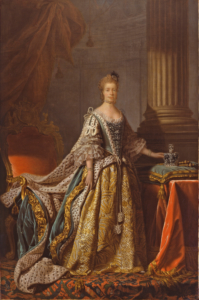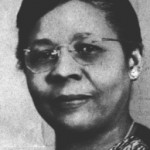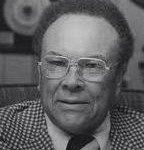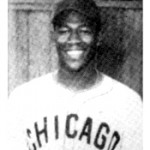Lynching: What happens when we forget?
Photo: A rare sight, a marker commemorating a lynching, this one in Brighton, Alabama. (Photo by Lance Warren.)
(Facing South) We didn’t know. Why didn’t we know?
The truth crept in — unexpected, unsought, unforgettable. Yet so many had forgotten; so few knew. We had to know why.
My wife, Hannah Ayers, and I were running workshops for history teachers, hearing lectures by scholars who again and again mentioned lynching. These mentions were brief, but mind-expanding. Until then, we knew only the borders of this history, the edges that are common knowledge. We started hearing that it was not only men who were killed, not only hangings, and not nearly as confined in time as we’d understood. It was women, it was children; it was burning, it was shooting. It was not the sidebar in our high-school history textbooks but an era, one enduring in ways impossible to miss once you start looking. For fully one-third of American history, Black citizens, predominantly in the South, were killed with regularity, the destruction of their bodies as reliable as the absence of arrests that followed.
Lynching, we learned, was an integral part of the American experience. Lynching defined the limits of American citizenship. In the earliest days of emancipation, lynching brought forth a new nation dedicated to the principles of the old. (more)
Online archive to document African-American soldiers in Civil War
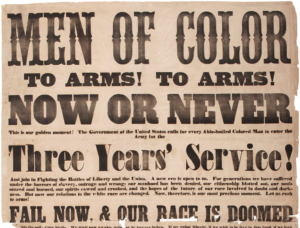
Excerpt from a printed broadside recruiting men of color to enlist in the US military after the Emancipation Proclamation in 1863. The broadside was written by Frederick Douglass, signed by Douglass along with 54 leaders in the Philadelphia African American community, and published in Philadelphia.
(Futurity) A new project is working to put records of the United States Colored Troops—regiments of African-American soldiers that included large numbers of men who had been slaves at the start of the Civil War—online.
Just a few weeks prior to the Battle of Gettysburg, the Union Army officially created the United States Colored Troops (USCT). However, details of these estimated 200,000 men who fought in the conflict are not easily accessible. While the army kept records of their backgrounds and where they fought as well as their fates and fortunes, they reside, in paper format, in the National Archives Building in Washington, DC.
To bring the USCT, composed of regiments that formed stretching back to 1862, closer to both scholars and descendants, a team of researchers has launched a project that is working to put these records online and in an accessible system.
The effort, which includes historians, social scientists, and the African American Civil War Museum in Washington, will produce an electronic archive chronicling an overlooked force in the shaping of American history—one that will document their lives before and after the war, shedding new light on life in the United States in the late 19th and early 20th centuries. (more)
Why Historians Aren’t Really Sure Whether Meghan Markle Will Be the First British Royal of Color
(Time) The nuptials of Prince Harry and Meghan Markle on Saturday (marked) a break from royal-wedding tradition in a number of ways, from the wedding cake to the invitations. Among the wedding’s most significant deviations from the past is the very fact that the bride is Meghan Markle: as a divorced, American, Catholic-raised woman of color, she falls into into several categories that stand out on the British royal family tree.
But some experts believe that Markle — whose father, Thomas Markle, is white and whose mother, Doria Ragland, is African-American — wouldn’t be the first black royal in British history.
One leading theory is that the distinction of being Britain’s first black Queen or first biracial Queen may belong to Queen Charlotte, who became Queen when she married King George III, who reigned from 1760 to 1820. Born Sophia Charlotte of Mecklenburg-Strelitz, the German princess was 17 when she married the 22-year-old British monarch, whom she met for the first time about six hours after arriving in Britain. They had 15 children together, 13 of whom lived to adulthood.
According to Mario De Valdes y Cocom, who researched her roots for a PBS Frontline documentary, Queen Charlotte is directly descended from a branch of the Portuguese royal family that had its roots in Africa. (more)
TIPHC Bookshelf
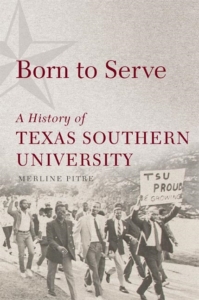 Published scholarship on black history in Texas is growing and we’d like to share with you some suggested readings, both current and past, from some of the preeminent history scholars in Texas and beyond. We invite you to take a look at our bookshelf page – including a featured selection – and check back as the list grows. A different selection will be featured each week. We welcome suggestions and reviews. This week, we offer, “Born to Serve, A History of Texas Southern University,” by Merline Pitre.
Published scholarship on black history in Texas is growing and we’d like to share with you some suggested readings, both current and past, from some of the preeminent history scholars in Texas and beyond. We invite you to take a look at our bookshelf page – including a featured selection – and check back as the list grows. A different selection will be featured each week. We welcome suggestions and reviews. This week, we offer, “Born to Serve, A History of Texas Southern University,” by Merline Pitre.
Texas Southern University is often said to have been “conceived in sin.” Located in Houston, the school was established in 1947 as an “emergency” state-supported university for African Americans, to prevent the integration of the University of Texas. Born to Serve is the first book to tell the full history of TSU, from its founding, through the many varied and defining challenges it faced, to its emergence as a first-rate university that counts Barbara Jordon, Mickey Leland, and Michael Strahan among its graduates.
Merline Pitre frames TSU’s history within that of higher education for African Americans in Texas, from Reconstruction to the lawsuit that gave the school its start. The case, Sweatt v. Painter, involved student Heman Marion Sweatt, who was denied entry to the University of Texas Law School because he was black. Pitre traces the tortuous measures by which Texas legislators tried to meet a provision of the state’s constitution that called for the establishment and maintenance of a “branch university for the instruction of colored youths of the State.” When the U.S. Supreme Court ruled in 1950 that the UT Law School’s efforts to remain segregated violated the U.S. Constitution, the future of the institution that would become Texas Southern University in 1951 looked doubtful.
In its early years the university persevered in the face of state neglect and underfunding and the threat of merger. Born to Serve describes the efforts, both humble and heroic, that faculty and staff undertook to educate students and turn TSU into the thriving institution it is today: a major metropolitan university serving students of all races and ethnicities from across the country and throughout the world.
Launched during the early civil rights movement, TSU has a history unique among historically black colleges and universities, most of which were established immediately after the Civil War. Born to Serve adds a critical chapter to the history of education and integration in the United States.
This Week in Texas Black History
May 20
On this day in 1881, Mary Elizabeth Branch was born to a family of former slaves near Farmville, Virginia. Branch received a bachelor’s degree in 1922 and a master’s degree in English in 1925, both from the University of Chicago. In 1930, the American Missionary Association appointed her president of Tillotson College in Austin, making her the first woman to head an accredited college in Texas. Under her direction the college’s facilities were improved, the library’s holdings were expanded, and the faculty size doubled. She also permitted the organization of fraternities and sororities, and encouraged the formation of academic and athletic clubs. In 1944, Branch helped to establish the United Negro College Fund.
May 21
On this day in 2005 Dallas civic leader Samuel William Hudson, Jr. passed away. Hudson was the city’s first African American to serve on a grand jury. As a civil rights activist, his efforts lead to the desegregation of Southern Methodist University’s School of Theology and the admittance of black patients to Methodist Hospital. Hudson graduated from Bishop College and was the father of former State Representative Sam Hudson, III.
May 22
 Marguerite Ross Barnett was born on this date in 1942. In 1990, she became the first woman and the first African-American to hold the office of president of the University of Houston. From Charlottesville, Virginia she grew up in Buffalo, New York and earned a political science degree from Antioch College and master’s and doctorate degrees in political science from the University of Chicago. A recognized scholar in political science, she taught at Princeton, Howard, and Columbia. At UH, she succeeded in raising more than $150 million for the institution, establishing the Texas Center for Environmental Studies, and instituting the nationally renowned Bridge Program, which aided and motivated disadvantaged students to make a successful transition from high school to college.
Marguerite Ross Barnett was born on this date in 1942. In 1990, she became the first woman and the first African-American to hold the office of president of the University of Houston. From Charlottesville, Virginia she grew up in Buffalo, New York and earned a political science degree from Antioch College and master’s and doctorate degrees in political science from the University of Chicago. A recognized scholar in political science, she taught at Princeton, Howard, and Columbia. At UH, she succeeded in raising more than $150 million for the institution, establishing the Texas Center for Environmental Studies, and instituting the nationally renowned Bridge Program, which aided and motivated disadvantaged students to make a successful transition from high school to college.
May 23
On this day in 1973, Houstonian Don Robey sold Duke-Peacock Records, one of the first nationally-successful black-owned labels, to ABC-Dunhill, bringing an end to an important era in the Texas recording industry. Robey founded Peacock Records in 1949 to promote his featured artist, Clarence “Gatemouth” Brown. In 1952, Peacock merged with Duke Records which added to Robey’s roster R&B musicians such as Junior Parker, Bobby Blue Bland, Big Mama Thornton, and Johnny Ace. Robey’s Duke-Peacock Records helped shaped the sound of early rock ‘n’ roll and left a lasting imprint on American popular music.
May 24
Former Negro Leagues star and Tuskegee Airman John “Mule” Miles died on the day in 2013 at age 91 in his home town, San Antonio. During World War II, he served as a mechanic for the 99th Pursuit Squadron. After that, he played for the Chicago American Giants from 1946 to 1949 and in 1947 hit 11 home runs in 11 straight games, a feat that has never been equaled. Giants’ manager Candy Jim Taylor, gave Miles his nickname saying that he “hit like a mule kicks.” Miles played alongside such greats as Jackie Robinson, Hank Aaron, and Satchel Paige.
May 25
Professional basketball great K.C. Jones was born on this day in 1932 in Taylor. At age nine, he moved with his mother to San Francisco where he starred in football and basketball at Commerce High School. At the University of San Francisco, Jones teamed with Bill Russell in leading the Dons to 56 consecutive wins and back-to-back NCAA championships in 1955 and 1956. Jones also played professionally with Russell on the powerful Boston Celtics teams as a defensive standout in late 1950s and 1960s. He was also a member of the 1956 U.S. Olympic Basketball Team that won a gold medal at Melbourne, Australia. Jones won eight championship rings as a player, one as an assistant coach with the Los Angeles Lakers, one as an assistant coach with the Celtics, and two as head coach of the Celtics. He was inducted to the Naismith Memorial Basketball Hall of Fame in 1989.
Blog: Ron Goodwin, Ph.D., author, PVAMU history professor
Ron Goodwin is an assistant professor of history at Prairie View A&M University. Even though he was a military “brat,” he still considers San Antonio home. Like his father and brother, Ron joined the U.S. Air Force and while enlisted received his undergraduate degree from Texas Lutheran University in Seguin, Texas. After his honorable discharge, he completed graduate degrees from Texas Southern University. Goodwin’s book, Blacks in Houston, is a pictorial history of Houston’s black community. His most recent book, Remembering the Days of Sorrow, examines the institution of slavery in Texas from the perspective of the New Deal’s Slave Narratives.
Recent Posts
King of Kings
During his lifetime Martin Luther King consistently paralleled the experiences of the biblical Children of Israel and the experiences of Africans in America. As a result, he thrust himself into the role of Moses. What I find interesting in these parallels was the ultimate goal of the story. The Children of Israel, after 400 years of bondage, eventually made their way to the Promised Land. This was the message that I believe King was ultimately…
Wakanda Forever — Part 2
The internet records the following regarding the financial success of the Black Panther as of March 25, 2018: Receipts grossed $631.4million in the US and Canada and a worldwide total of $1.239 billion; The film made $370.5million worldwide in its opening weekend (the 15th largest of all time); Thus far, Black Panther is the highest-grossing solo superhero film and the 3rd third highest-grossing movie in the Marvel Cinematic Universe (MCU); and In only five weeks after…
Submissions wanted
Historians, scholars, students, lend us your…writings. Help us produce the most comprehensive documentation ever undertaken for the African American experience in Texas. We encourage you to contribute items about people, places, events, issues, politics/legislation, sports, entertainment, religion, etc., as general entries or essays. Our documentation is wide-ranging and diverse, and you may research and write about the subject of your interest or, to start, please consult our list of suggested biographical entries and see submission guidelines. However, all topics must be approved by TIPHC editors before beginning your research/writing.
We welcome your questions or comments. Please contact Mr. Michael Hurd, Director of TIPHC, at mdhurd@pvamu.edu.

